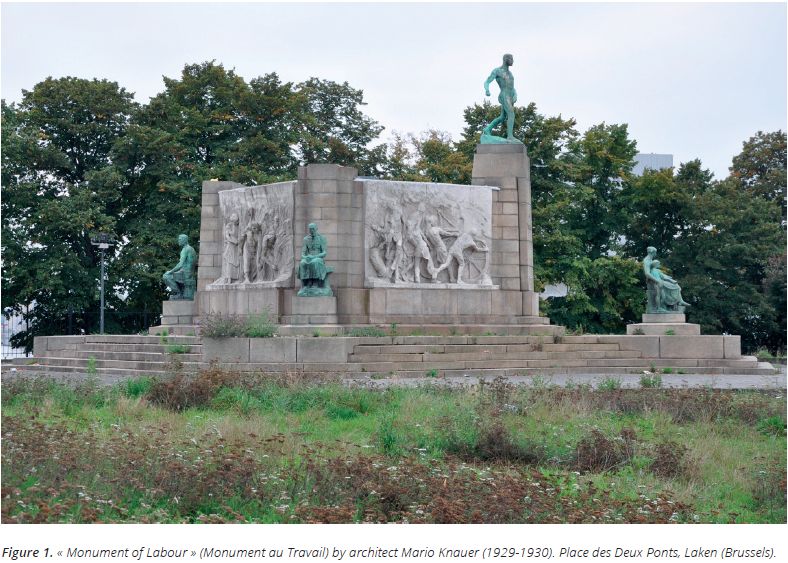PUBLICATIONS
A pavilion for Constantin Meunier by architect Gaston Eysselinck (1929)

Author: Marc Dubois
Publisher: Universitat Politècnica de Valècia Valècia (2015)
Pages: 17
Language: English
(EN) A pavilion for Constantin Meunier by architect Gaston Eysselinck (1929)
At the end of the 19th century, the Belgian sculptor Constantin Meunier (1831-1905) had an international reputation. The main theme of his oeuvre is the working class. His sculptures were frequently exposed in different European cities. Two of his works were presented at the art biennale of Venice in 1907. The Ny Carlsberg Glytotek in Copenhagen possesses the largest collection of Meunier’s sculptures (48 pieces).
In 1929, the S.C.A.B. (Société Centrale d’Architecture de Belgique), the national architects organisation, launched a competition for the “Monument au Travail”, a monument that puts four reliefs and five sculptures together in Laken (Brussels). The architect Mario Knauer (1879-1948) was chosen to build the monument. The young architect Gaston Eysselinck (1907-1953) participated with a fascinating project, but was directly eliminated by the jury. What were the ideas of Eysselinck’s proposition? A pavilion with a roof garden and an open ceiling? A meditation space where the light enters, following the example of Dante’s Paradise? Or was he influenced by the German pavilion of Mies van der Rohe in Barcelona, built in the beginning of 1929?
This article was published in the review INTERBELLUM n° 5, 2014 (Belgium)
and recently in the review VLC Arquitectura / Research Journal (Volume 2 / Issue 1), the review of Universitat Politècnica de Valècia. (VLC arquitectura is an international research journal, covering the architecture as an interdisciplinary understanding.)

(NL) “Monument aan de Arbeid” Brussel (Laken) 1929-1930.
De beeldhouwer Constantin Meunier (1831-1905) behoort tot de Europese top op het einde van de 19de eeuw. Meunier is de belangrijkste Belgische beeldhouwer en met zijn realistische beeldhouwwerken met als onderwerp de arbeider genoot tijdens zijn leven reeds van een grote internationale erkenning.
In 1929 werd door de S.C.A.B. een wedstrijd georganiseerd om de beelden en reliëfs van Meunier een definitieve plaats te geven in Laken. De jury koos voor één van de ontwerpen van architect Mario Knauer.De jonge Gentse architect Gaston Eysselinck (1907-1953) nam deel aan deze competitie, maar zijn verrassend ontwerp werd reeds in de eerste ronde door de jury verworpen.
(FR) “Monument au le Travail” Bruxelles (Laken) 1929-1930
A la fin du 19ieme siècle le sculpteur belge Constantin Meunier (1831-1905) est parmi les artistes les plus reconnus. Avec ses sculptures aux thèmes réalistes, avec comme thème le travailleur, il obtient une réputation internationale.
En 1929 on organise une compétition pour le “Monument au Travail”, un monument pour mettre ensemble définitivement des reliefs et des sculptures à Laken (Bruxelles). Le jeune architecte Gaston Eysselinck (1907-1953) participera mais sa proposition fut éliminée au premier tour par le jury.



